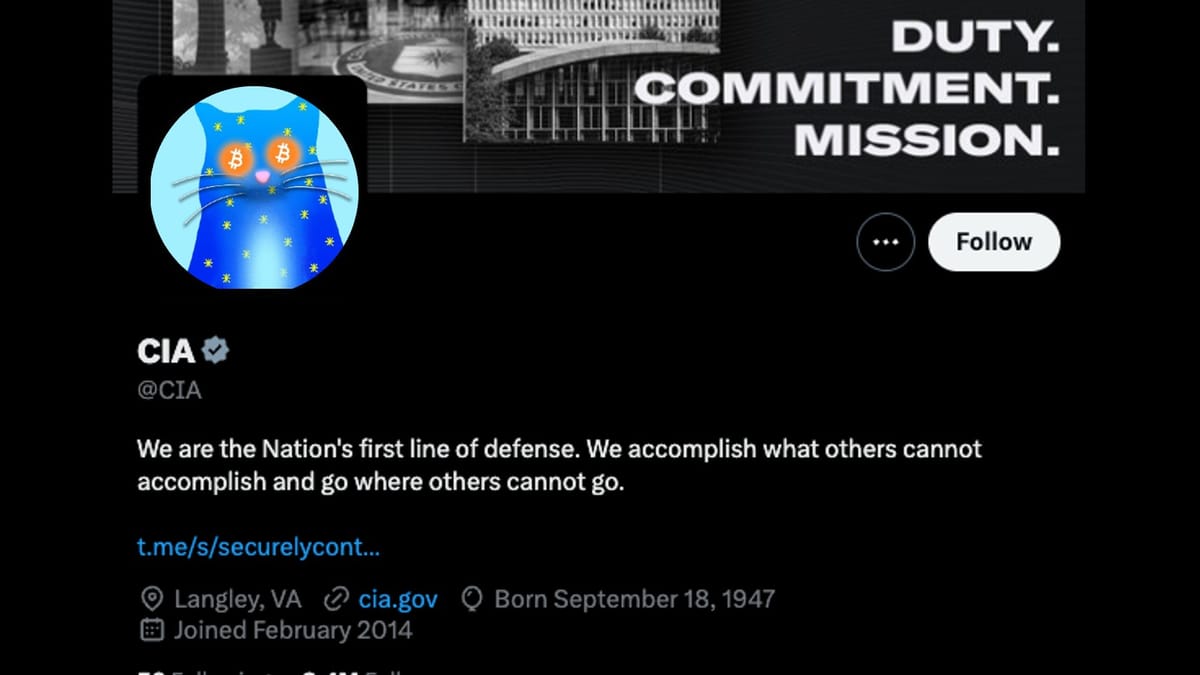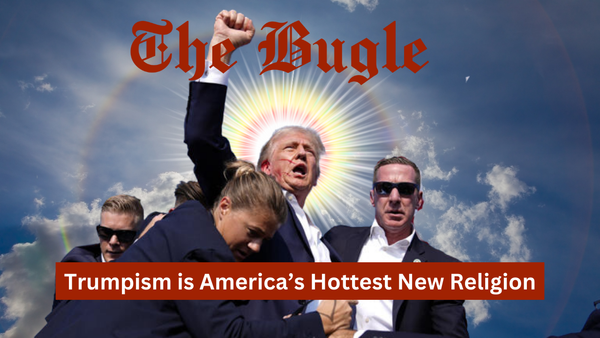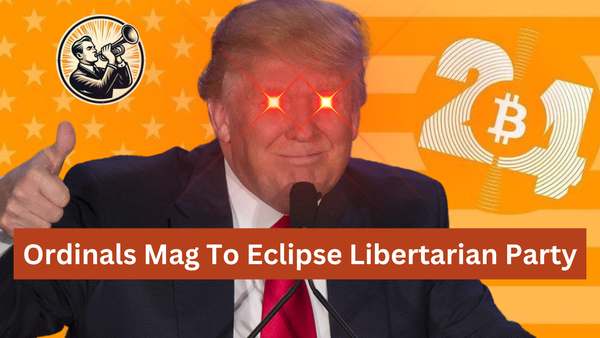CIA Changes Profile Picture To a Cat, Signaling Support For OP_CAT

The Central Intelligence Agency, the civilian foreign intelligence service for the federal government of the United States, changed its profile picture on X (Formerly Twitter) to a picture of a cartoon cat with Bitcoins for eyes. This is seen as a clear nod to the Bitcoin community and a signal that The Agency supports the proposal to reactivate the Satoshi-era opcode which proponents say will enable covenants and other features on Bitcoin.
"The CIA is one of the most powerful and admirable instutitions in the world. They're profile picture is now a cat with Bitcoin eyes. Laser eye maxis in full cope mode." - Udi Wertheimer
The new profile pic is more than a mere aesthetic update. It is the first time the CIA has weighed in publicly on debate over consensus changes to Bitcoin despite being early adopters and users of the protocol. While most observers and Bitcoin analysts were surprised by the very public and very unambiguous move by the CIA, most agreed the government, including intelligence agencies, have a big stake in Bitcoin's future and they undoubtedly have strong opinions about potential changes to the protocol.
Notably, an hour after the CIA changed its profile picture, data gathered from the WayBackMachine shows the National Security Agency (NSA) changed its profile picture to an AI generated image of a Rueben sandwich but quickly changed it back before the public noticed.
What does it mean?
To put it simply, not much. It's no secret that the government has been interested in, using, and holding Bitcoin for over a decade. The U.S. government has a Coinbase account and undoubtedly several hardware wallets, like most of us. However, signaling support of OP_CAT likely means the CIA has traveled down the rabbit hole at this point. It means we orange pilled the government.
What is OP_CAT?
OP_CAT is a Bitcoin opcode that Satoshi included in the original Bitcoin stack but which they removed in 2010 because it theoretically allowed users to push an unlimited amount of data to Bitcoin's blockchain in order to DoS the chain. Last year, a proposal to reintroduce OP_CAT as an opcode for tapscript and the proposal was just assigned BIP number #347 a few weeks ago.
According to Colin Harper from Hash Rate Index, "OP_CAT operates by allowing a Bitcoin user to join (a.k.a. concatenate in computer science parlance) two data points together within a stack and places these values at the top of the stack, which makes these values the first items acted on in the event of a transaction. The concatenated values on the stack can ensure that the associated bitcoin can only be spent if certain conditions are met."
What does OP_CAT allow?
Among other use cases, OP_CAT enables covenants and vaults. Proponents say covenants and vaults would improve existing cold storage and custody solutions. Companies like AnchorWatch, which provide insurance on Bitcoin in compliant cold storage wallets, could use vaults to add additional layers of security to customer funds and make their insurance premiums more affordable. AnchorWatch CEO Rob Hamilton says, "Vaults give bitcoin gain reactive security, enabling a window prior to final settlement where funds can be reclaimed before they get to their final destination."
Vaults give bitcoin gain reactive security, enabling a window prior to final settlement where funds can be reclaimed before they get to their final destination.
— Rob Hamilton (@Rob1Ham) May 22, 2024
This would allow us at @AnchorWatch, other Bitcoin companies, and sovereign individuals to better protect their money.
To sum it all up, OP_CAT will allow the CIA to better protect their money. In the deep state world, agents aren't elected. Different presidents come and go. Their administrations could either be hostile or friendly to Bitcoin and Bitcoiners. OP_CAT and the features it enables allow the CIA to have an extra layer of protection for their Bitcoin even if the White House steals their hardware wallets.






